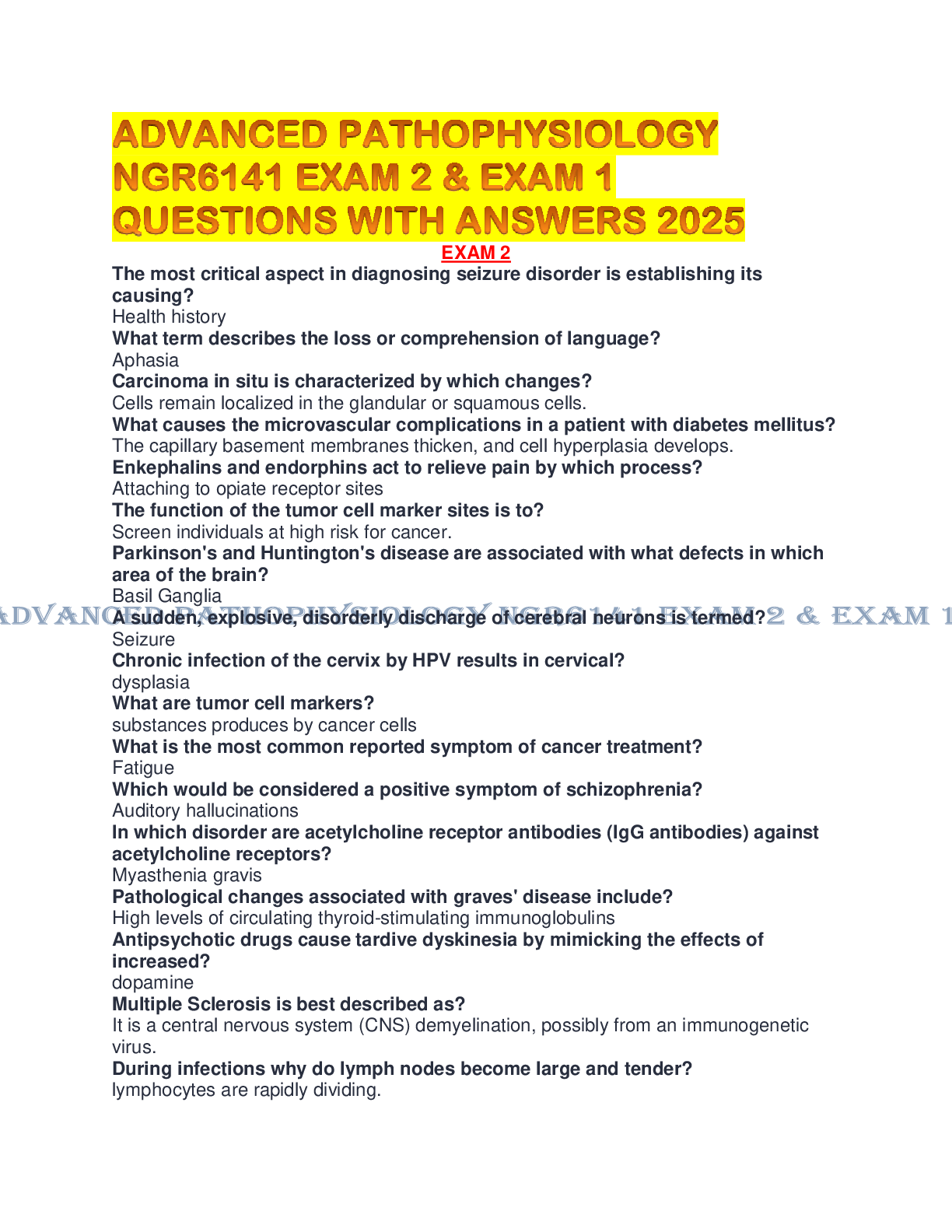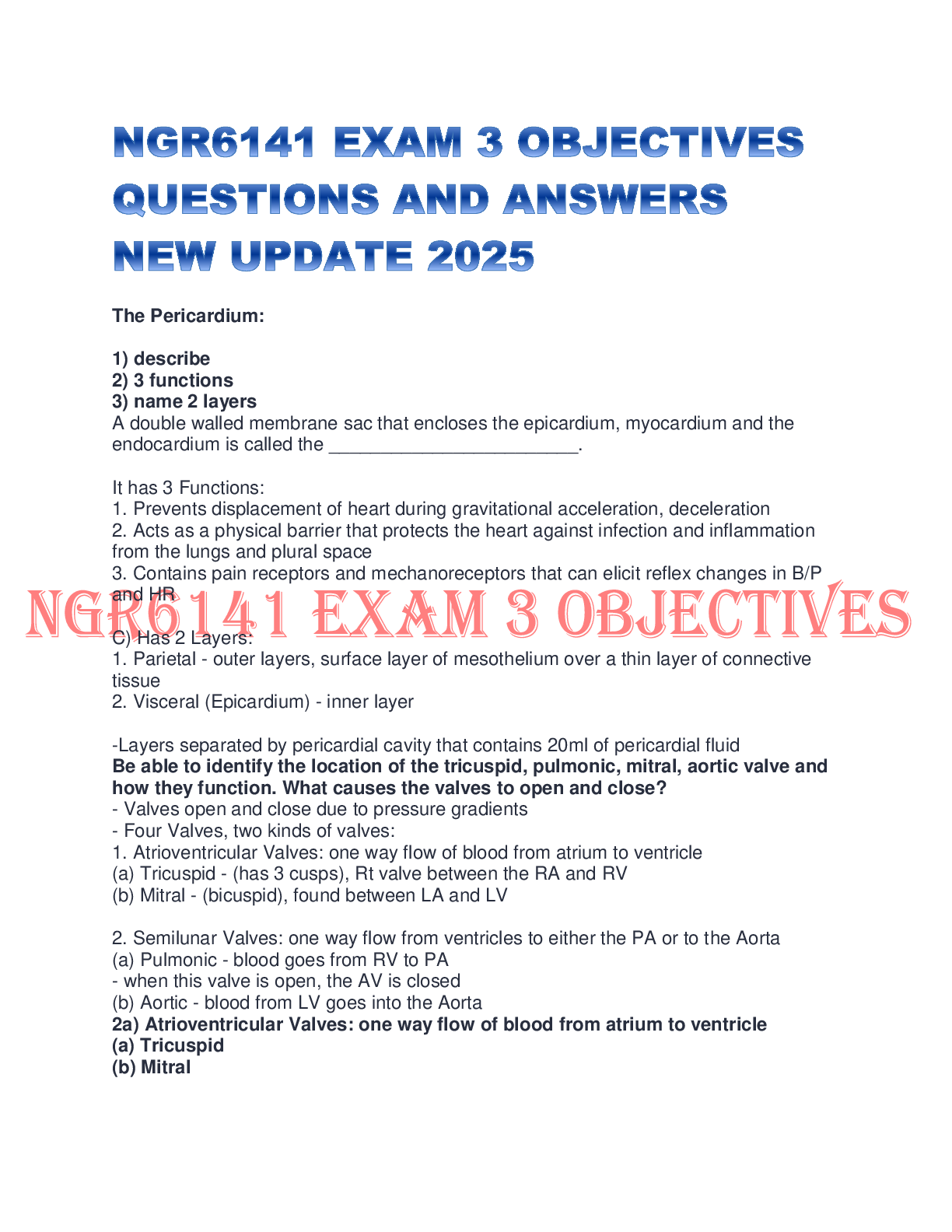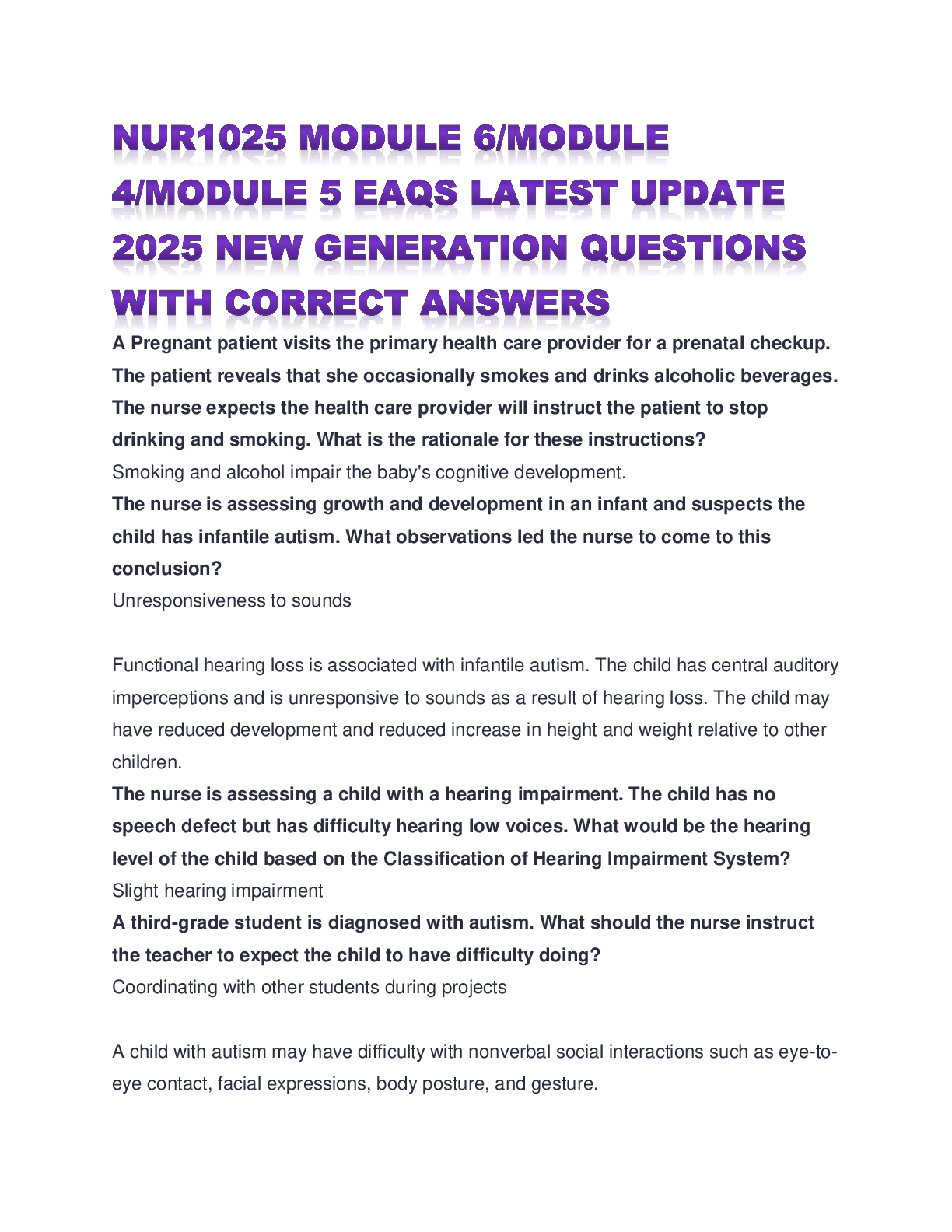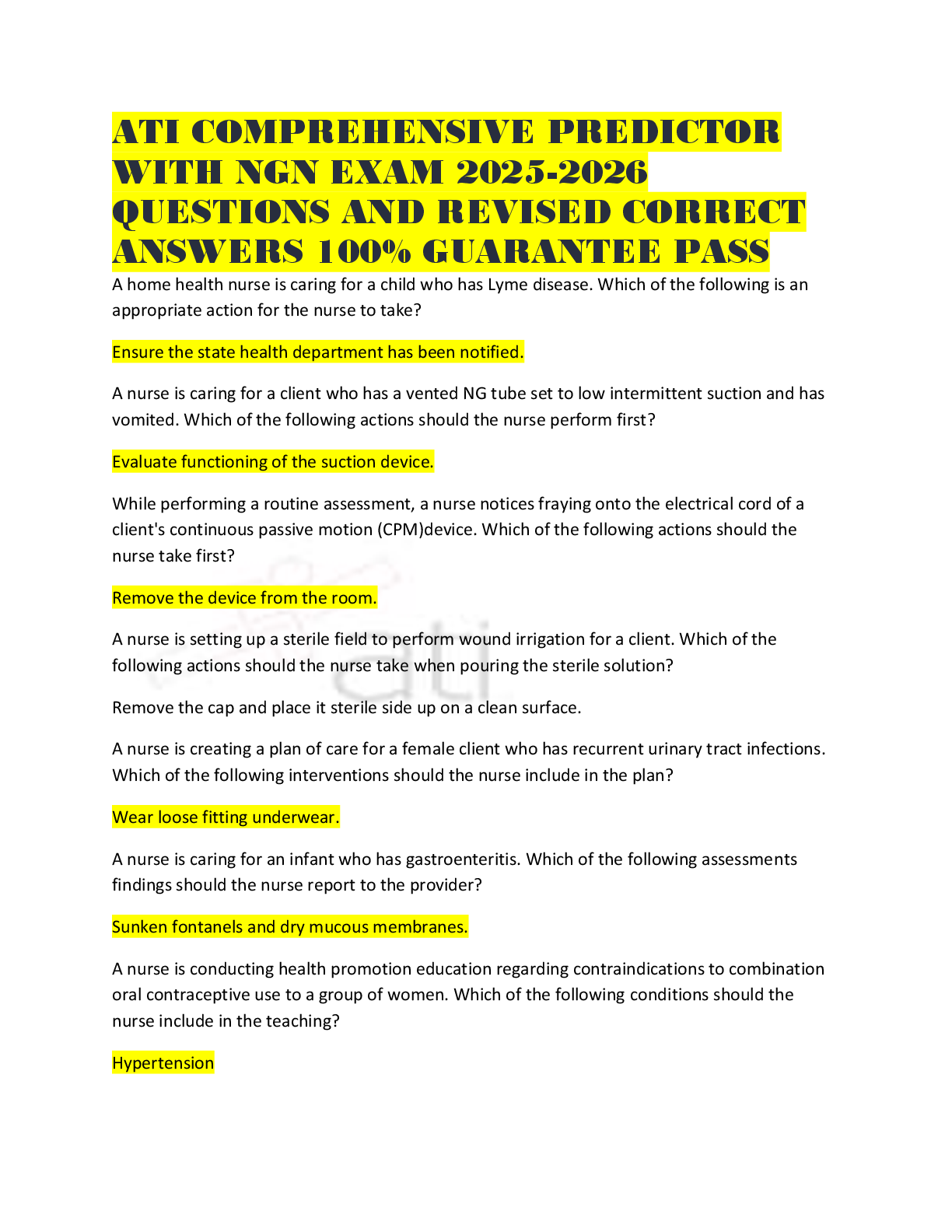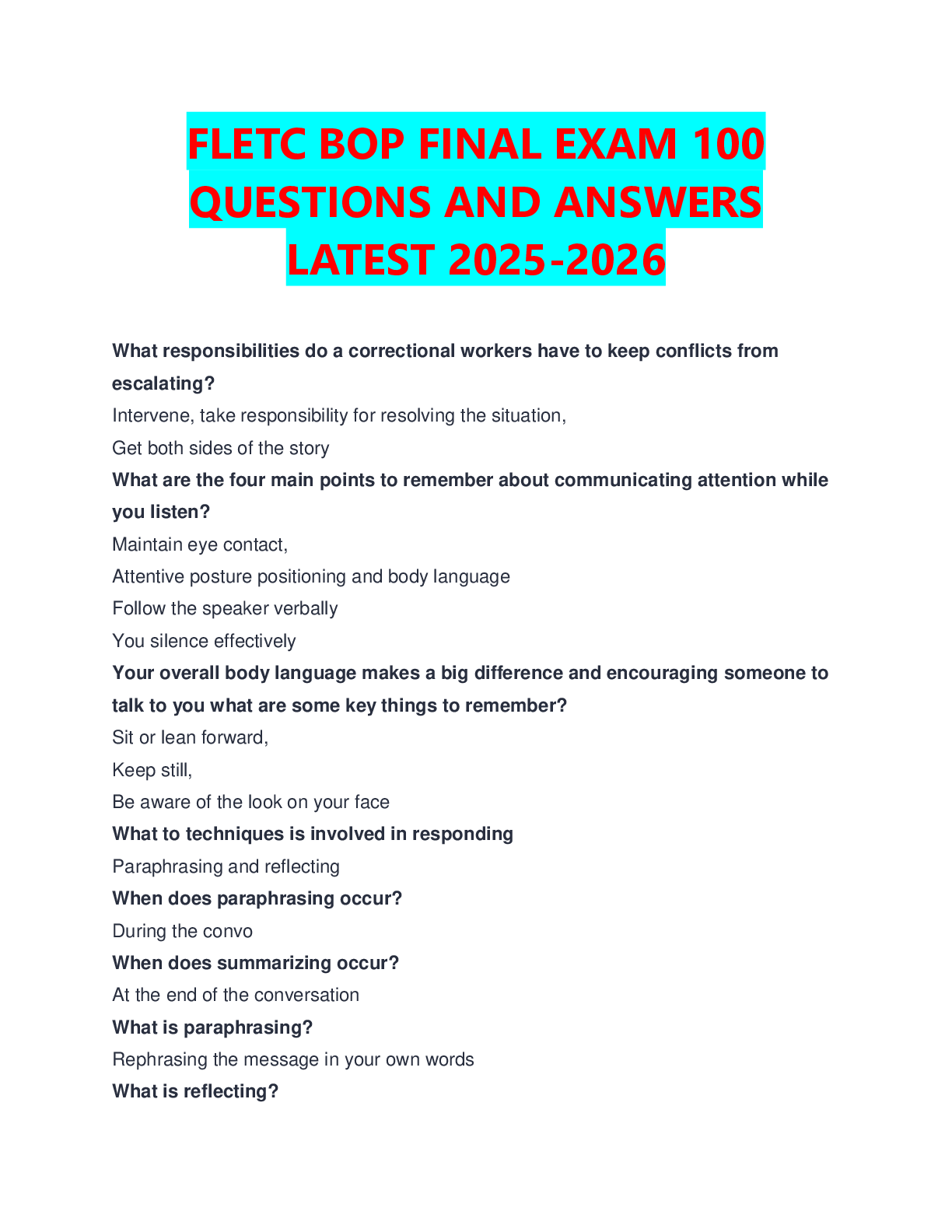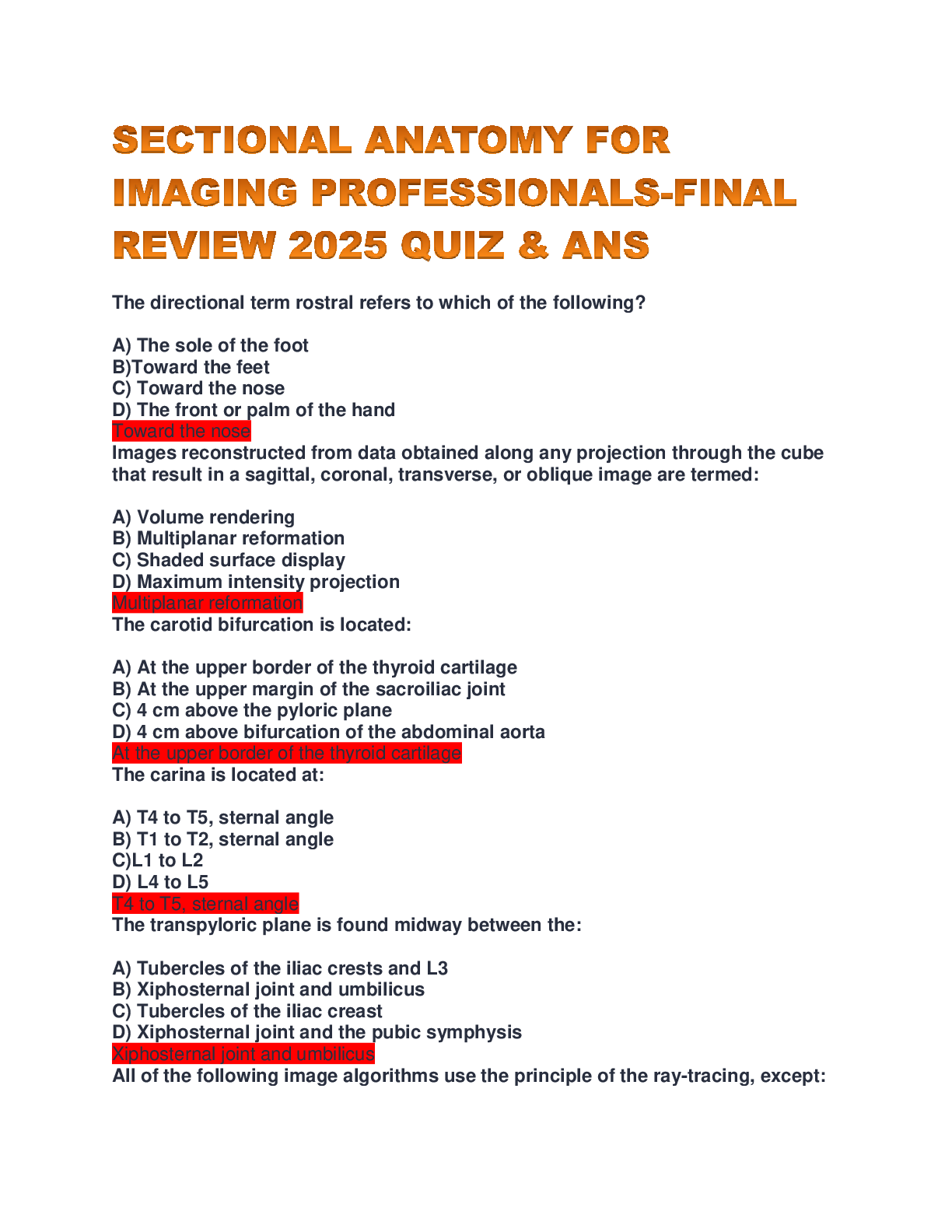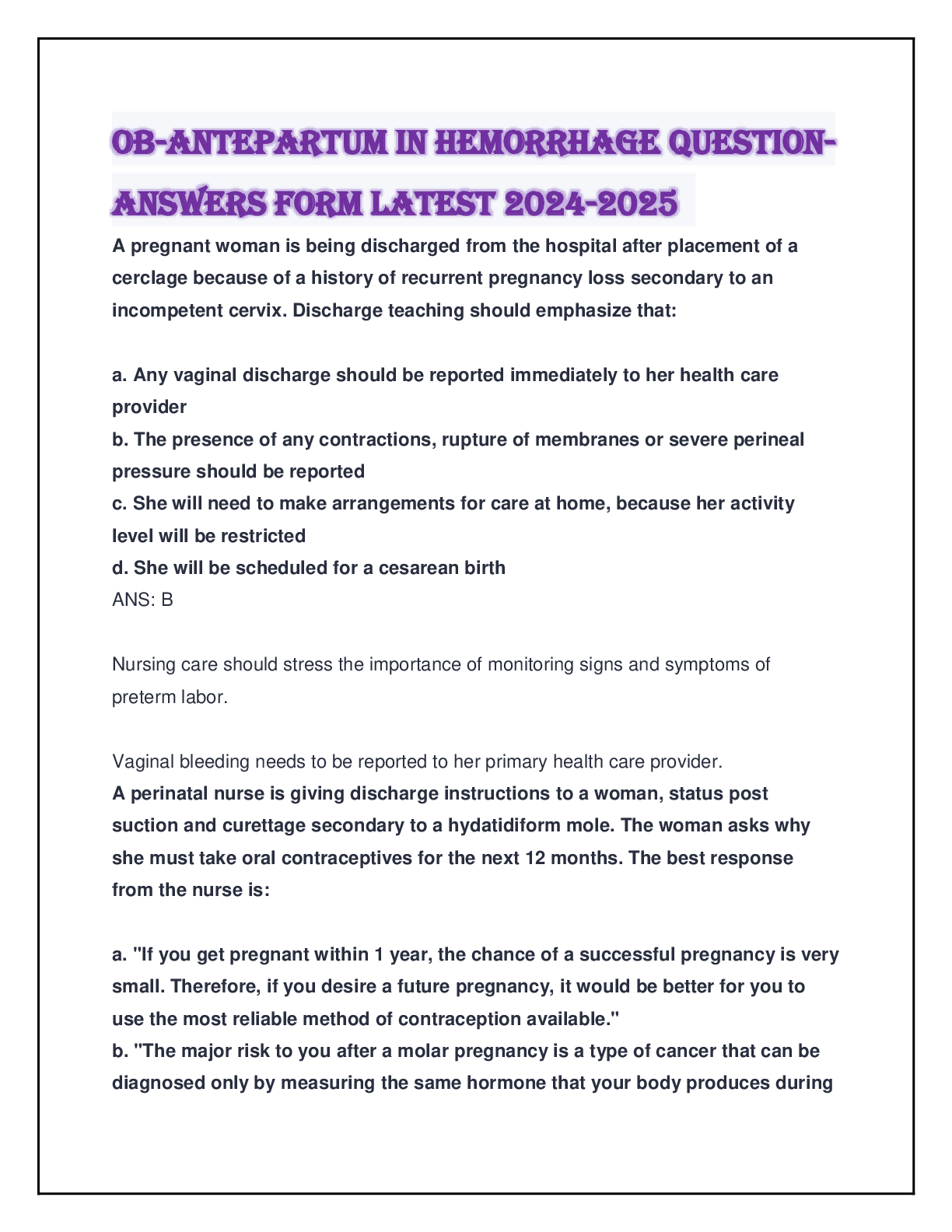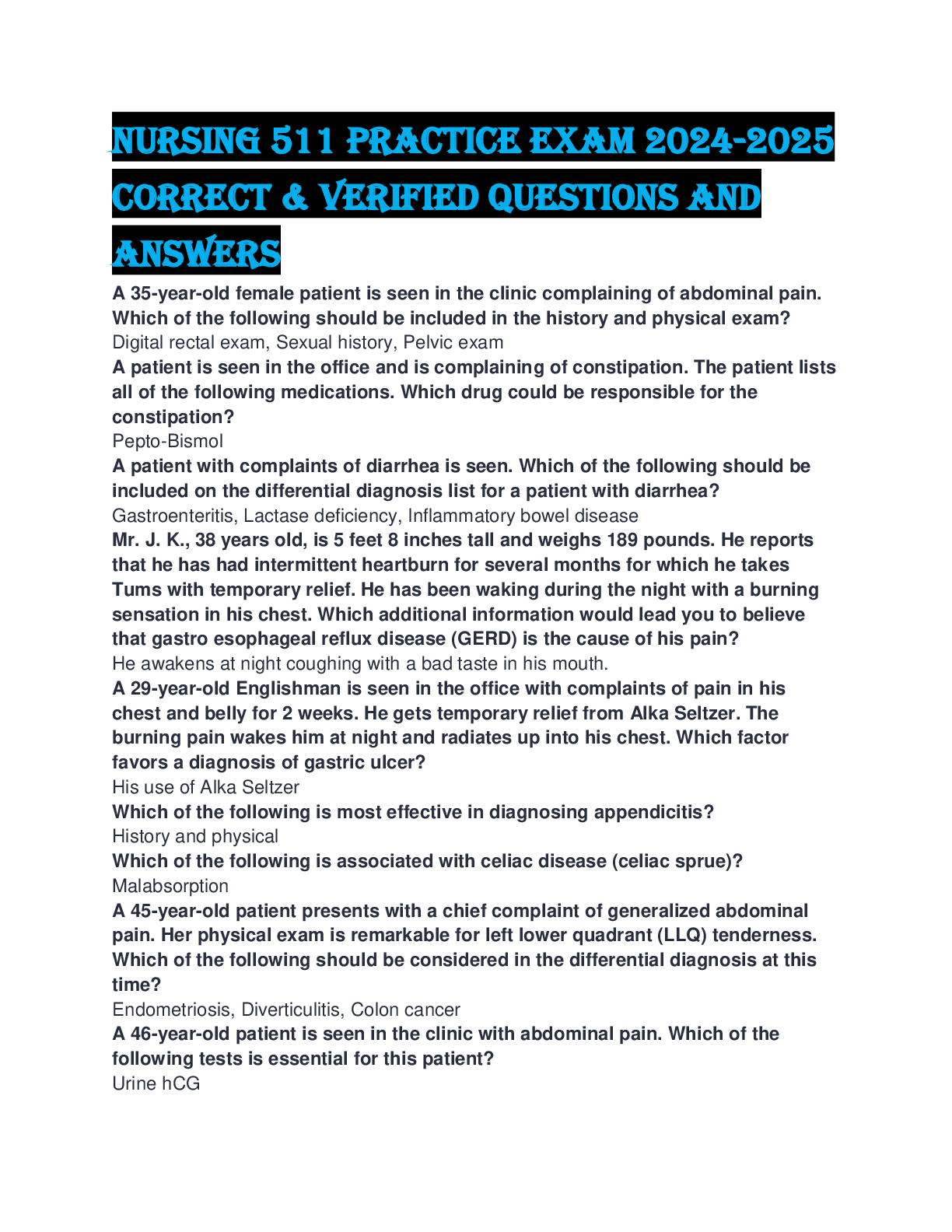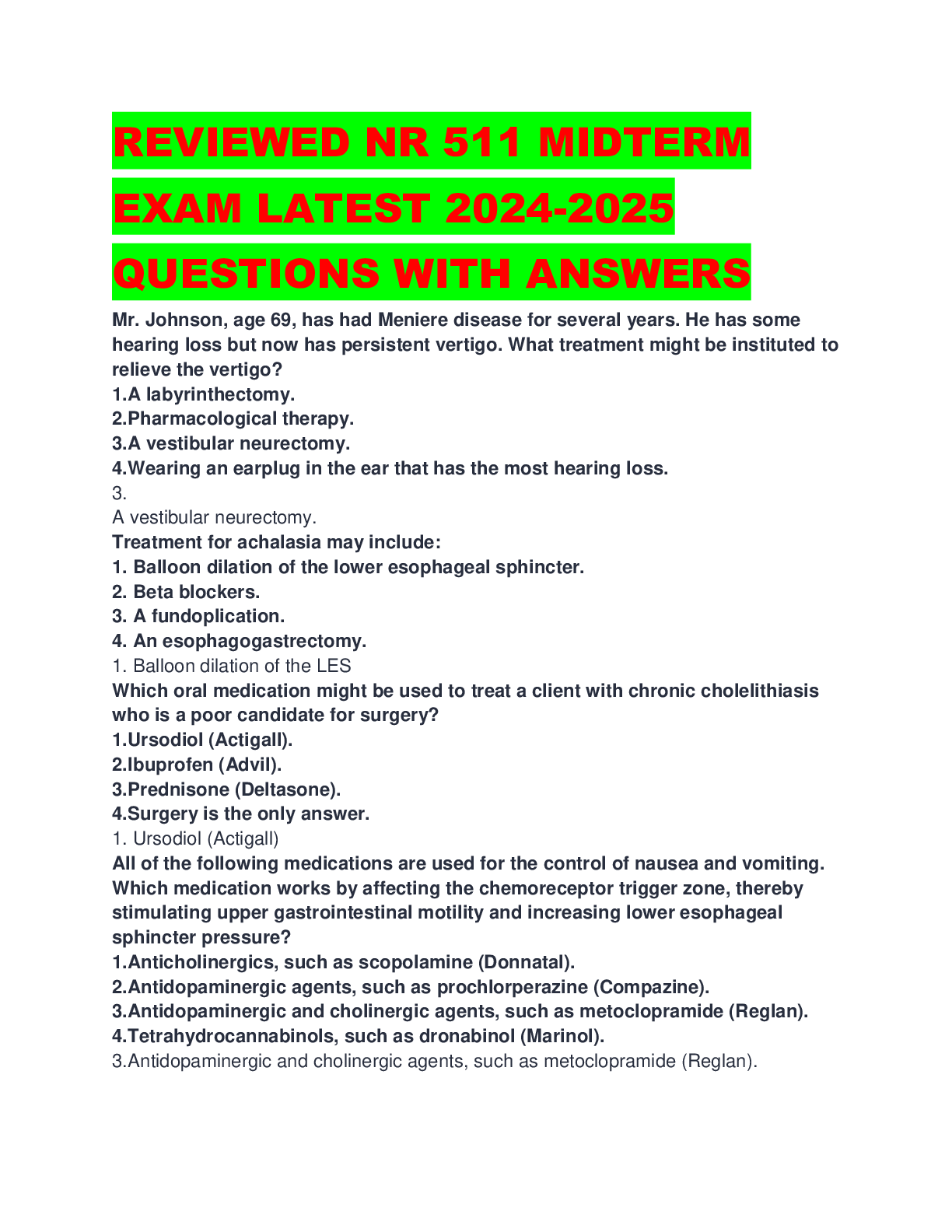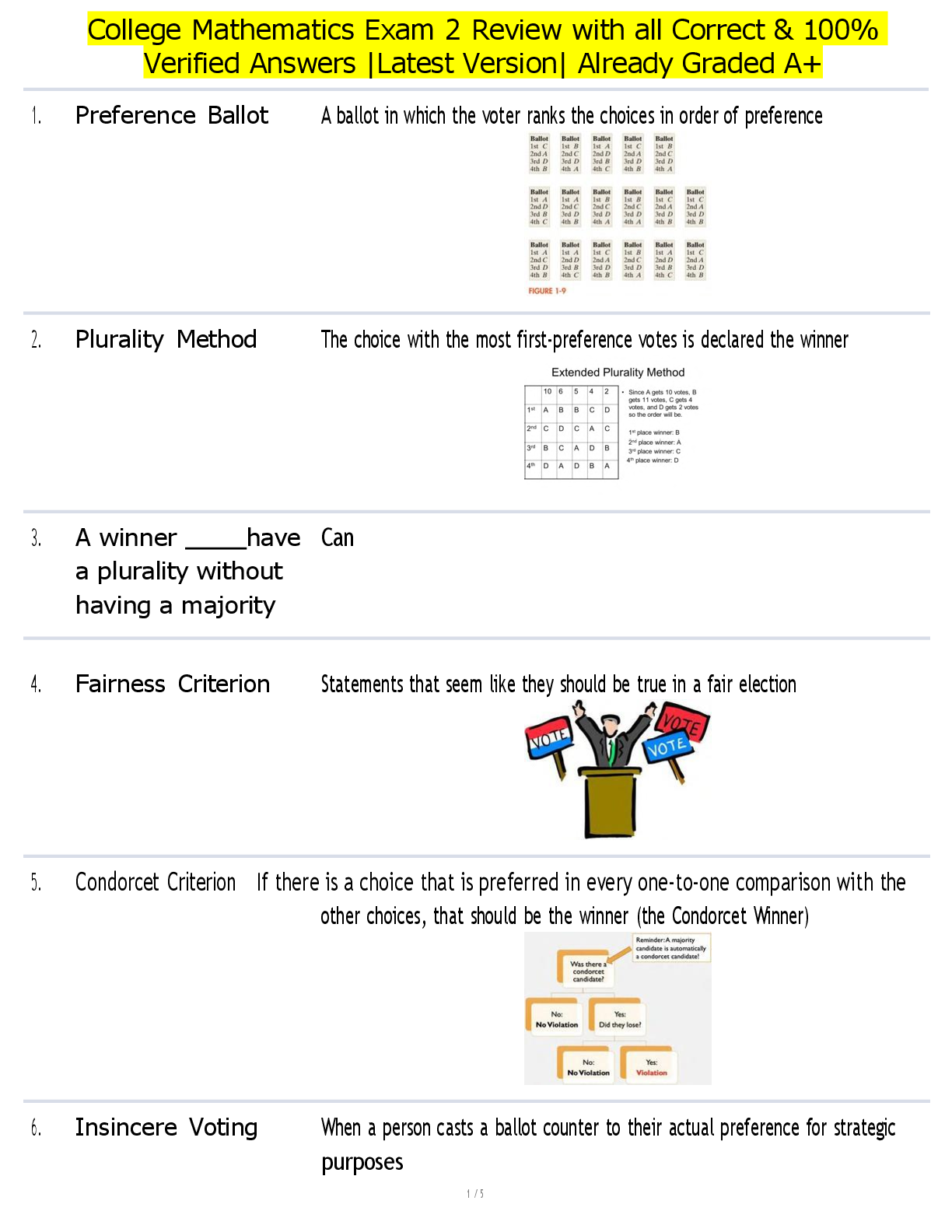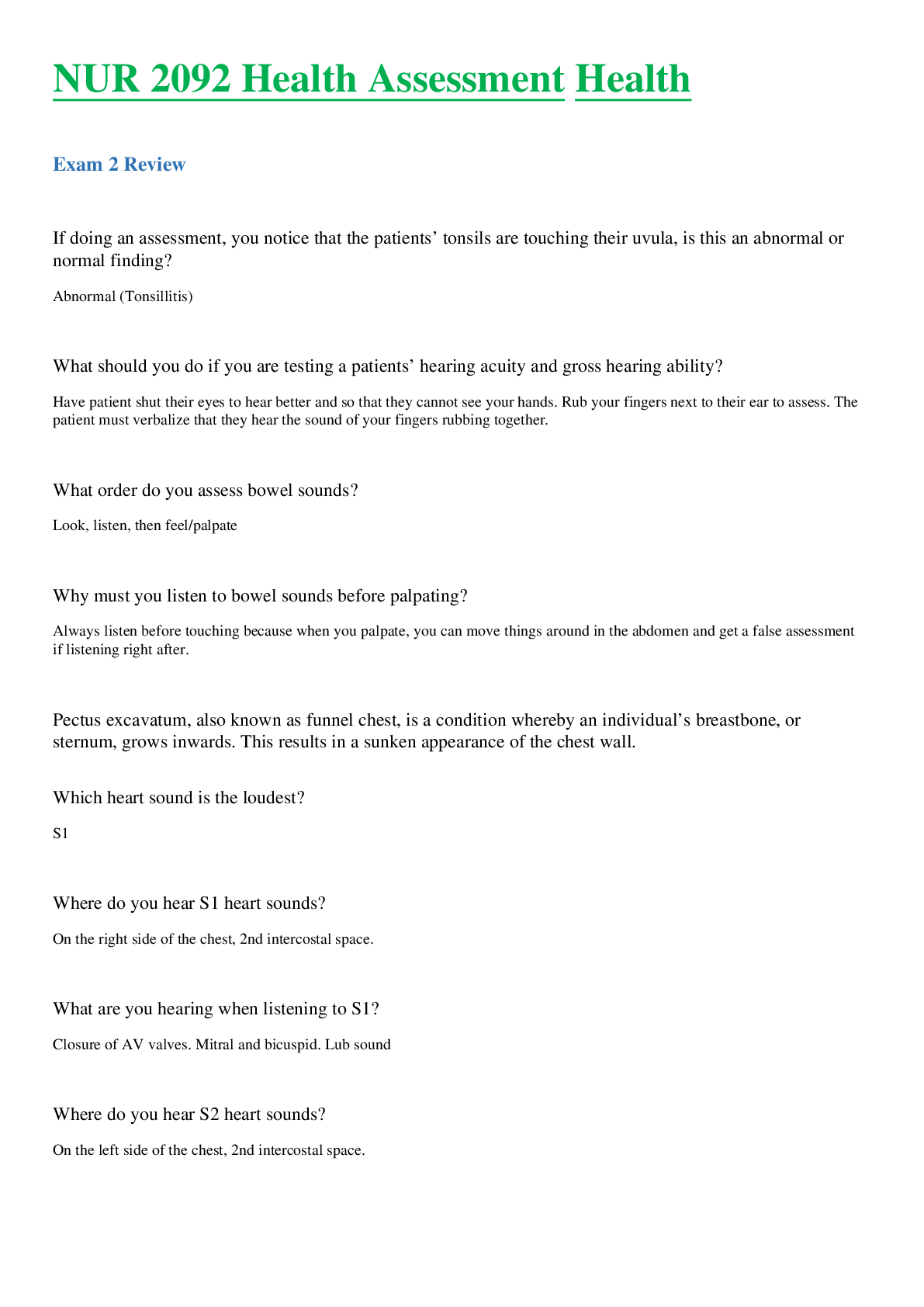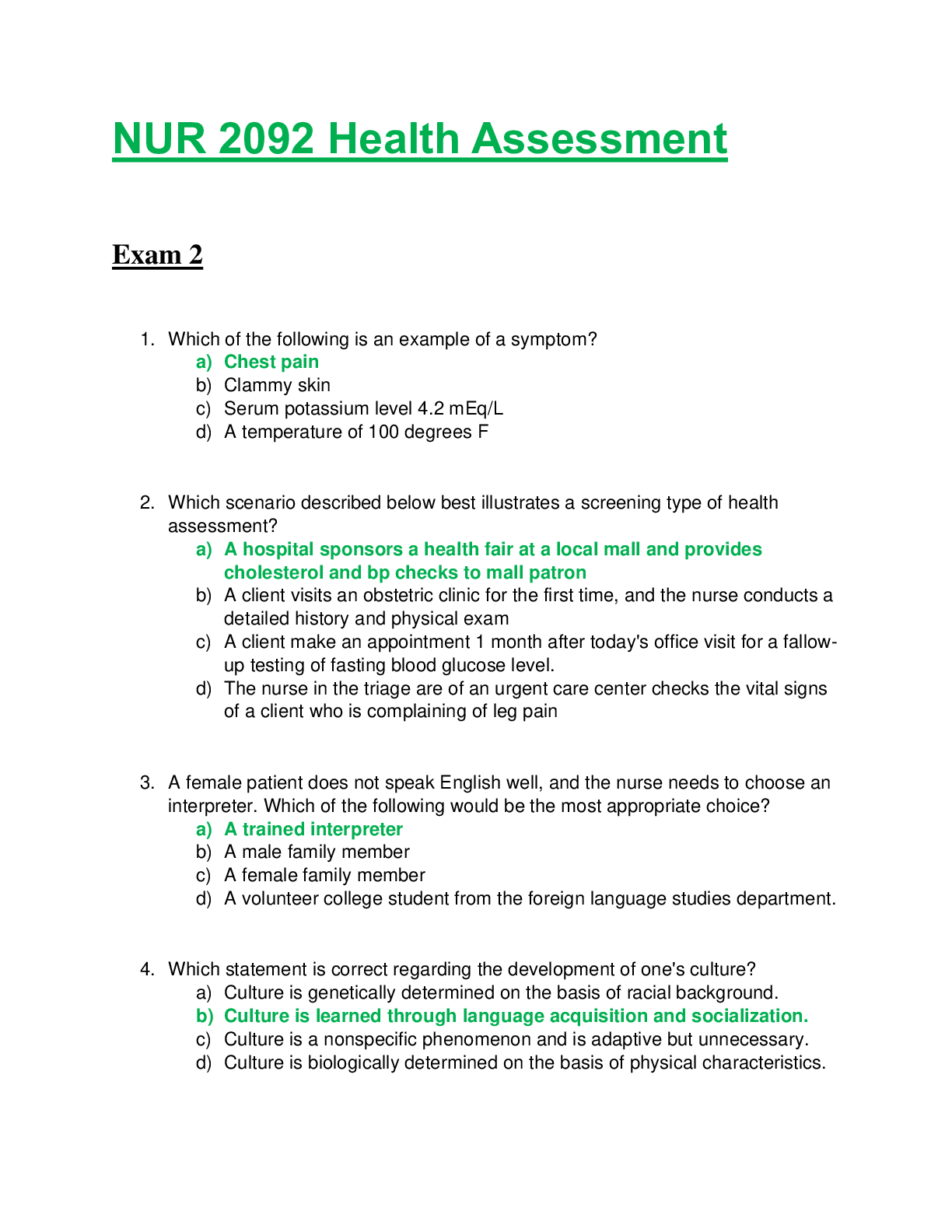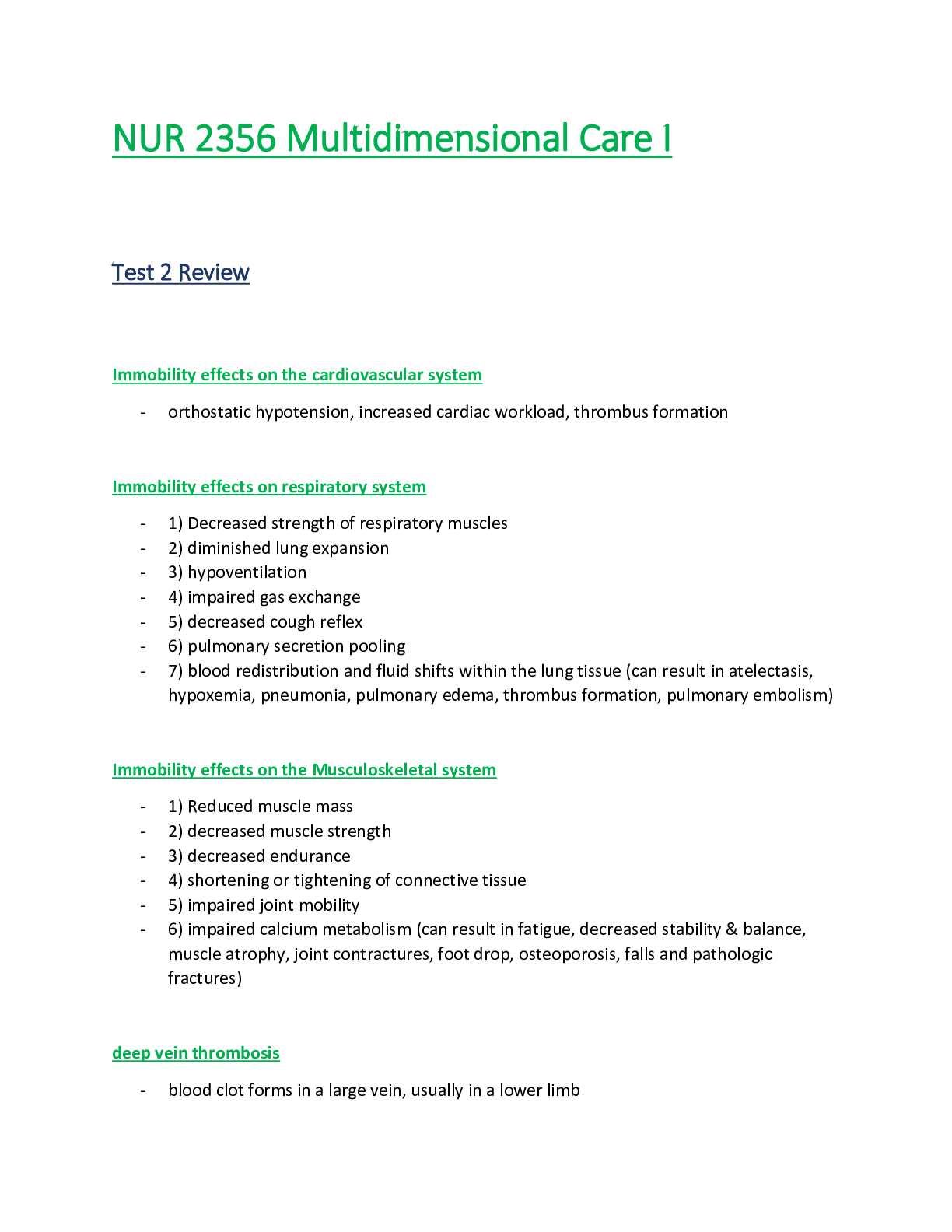HESI Exit RN > EXAM REVIEW > HESI EXIT RN EXIT NEW VERSION 2023 _2024 QUESTIONS AND ANSWERS (All)
HESI EXIT RN EXIT NEW VERSION 2023 _2024 QUESTIONS AND ANSWERS
Document Content and Description Below
HESI EXIT RN EXIT NEW VERSION 2023 _2024 QUESTIONS AND ANSWERS 1. A nurse observes a patient rising from a chair slowly by pushing on the chair arms. Which type of tension and con ... traction did the nurseobserve? a. Eccentric tension and isotonic contraction b. Eccentric tension and isometric contraction c. Concentric tension and isotonic contraction d. Concentric tension and isometric contraction ANS: A This movement causes eccentric tension and isotonic contraction. Eccentric tension helps control the speed and direction of movement. For example, when using an overhead trapeze, the patient slowly lowers himself to the bed. The lowering is controlled when the antagonistic muscles lengthen. By pushing on the chair arms and rising eccentric tension and isotonic contraction occurred. In concentric tension, increased muscle contraction causes muscle shortening, resulting in movement such as when a patient uses an overhead trapeze to pull up in bed. Concentric and eccentric muscle actions are necessary for active movement and therefore are referred to as dynamic or isotonic contraction. Isometric contraction (static contraction) causes an increase in muscle tension or muscle work but no shortening or active movement of the muscle (e.g., instructing the patient to tighten and relax a muscle group, as in quadriceps set exercises or pelvic floor exercises). 2. A nurse notices that a patient has a structural curvature of the spine associated with vertebral rotation. Which condition will the nurse most likelyfind documented in the patient’s medical record? a. Scoliosis b. Arthritis c. Osteomalacia d. Osteogenesis ANS: A Scoliosis is a structural curvature of the spine associated with vertebral rotation. Osteogenesis imperfecta is an inherited disorder that makes bonesporous, short, bowed, and deformed. Osteomalacia is an uncommon metabolic disease characterized by inadequate and delayed mineralization,resulting in compact and spongy bone. Arthritis is an inflammatory joint disease characterized by inflammation or destruction of the synovial membrane and articular cartilage and by systemic signs of inflammation. 3. A nurse is caring for a patient who has some immobility from noninflammatory joint degeneration. The nurse is teaching the patient about this process. Which information will the nurse include in theteaching session? a. This will affect synovial fluid. b. This will affect the body systemically. c. This involves mostly non–weight-bearing joints. d. This involves overgrowth of bone at the articular ends. ANS: D Joint degeneration, which can occur with inflammatory and noninflammatory disease, is marked by changes in articular cartilage combined with overgrowthof bone at the articular ends. Degenerative changes commonly affect weight- bearing joints. Synovial fluid is normal in noninflammatory diseases. Inflammatory joint disease (e.g., arthritis) is characterized by inflammation ordestruction of the synovial membrane and articular cartilage and by systemic signs of inflammation. 4. The nurse is providing care to a patient who is bedridden. The nurse raises the height of the bed. What is the rationale for the nurse’s action? a. Narrows the nurse’s base of support. b. Allows the nurse to bring feet closer together. c. Prevents a shift in the nurse’s base of support. Shifts the nurse’s center of gravity farther away from the base of d. support. ANS: C Raising the height of the bed when performing a procedure prevents bending too far at the waist and shifting the base of support. Balance is maintained by proper body alignment and posture through two simple techniques. First, widen the base of support by separating the feet to a comfortable distance. Second, increase balance by bringing the center of gravity closer to the baseof support. 5. A nurse is following the no-lift policy when working to prevent personal injury. Which type of personal back injury is the nurse most likely trying toprevent? a. Thoracic b. Cervical c. Lumbar d. Sacral ANS: C The most common back injury for nurses is strain on the lumbar musclegroup, which includes the muscles around the lumbar vertebrae. While cervical, thoracic, and sacral can occur, lumbar is the most common. 6. The nurse is caring for a patient in the emergency department with an injured shoulder. Which type of joint will the nurse assess? a. Fibrous b. Synovial c. Synergistic d. Cartilaginous ANS: B Synovial joints, or true joints, such as the hinge type at the elbow, are freelymovable and the most mobile, numerous, and anatomically complex body joints. Fibrous joints fit closely together and are fixed, permitting little, if any, movement such as the syndesmosis between the tibia and the fibula. Synergistic is a type of muscle, not joint. Cartilaginous joints have little movement but are elastic and use cartilage to unite separate bony surfacessuch as the synchondrosis that attaches the ribs to the costal cartilage. [Show More]
Last updated: 2 years ago
Preview 1 out of 5 pages

Buy this document to get the full access instantly
Instant Download Access after purchase
Buy NowInstant download
We Accept:

Reviews( 0 )
$10.00
Can't find what you want? Try our AI powered Search
Document information
Connected school, study & course
About the document
Uploaded On
Jun 22, 2023
Number of pages
5
Written in
All
Additional information
This document has been written for:
Uploaded
Jun 22, 2023
Downloads
0
Views
90

